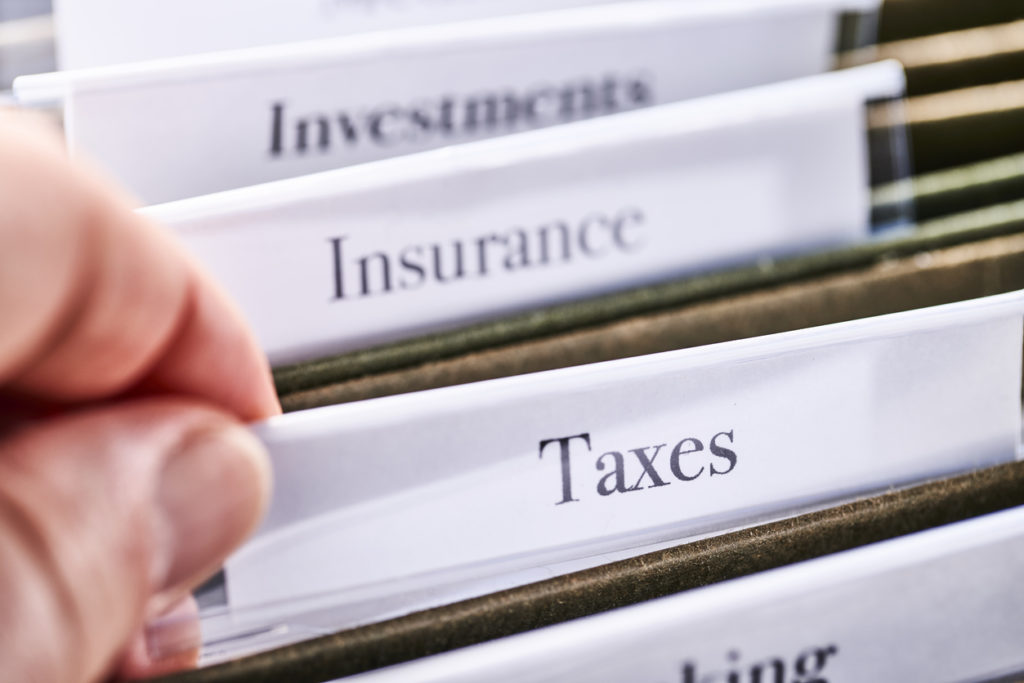Important PPP Updates from the Treasury/SBA Forgiven Loan Amounts May Result in Non-deductible Expenses
May 1, 2020

Plus Guidance on PPP Loan Audits, Forgiveness Computation, and More
In a flurry of announcements and press releases this week, the Treasury and the SBA issued new clarification and regulations on many lingering questions related to the Paycheck Protection Program (PPP), including taxability, audit potential, disbursements and more.
Forgiven loan amounts may result in non-deductible expenses
Perhaps one of the most looming uncertainties when accounting for PPP loans has been whether the forgiven amount will really provide a tax benefit. The IRS released Notice 2020-32 on April 30 to clarify this question with a resounding, no. By virtue of the fact that the expenses supporting the forgivable amount of the loan become non-deductible under this IRS Notice, in effect, the forgivable portion of the PPP becomes taxable.
In other words, the result is the forgivable amount = non-deductible expenses, and therefore the impact is net zero to taxable income.
The confusion originated from wording included in the CARES Act, which specified that forgiven PPP loan amounts should be considered “canceled indebtedness” and “excluded from gross income.” But many questioned whether this meant the forgiven amount was not taxable, and whether taxpayers could use the benefit in combination with other deductions created by the legislation.
The statement from the IRS clarifies that taxpayers cannot deduct expenses that were “covered” by the forgivable portion of the PPP loan.
The Notice aims to eliminate the potential double benefit created if entities whose PPP loan is partially or fully forgiven also claim deductions for the costs paid. However, the impact of the IRS’s latest decision could be even further reaching, with implications on the R&D Tax Credit and retirement plans as well.
Aprio believes that the wages covered by the forgiveness amount will not be able to be used towards the computation of Federal or State R&D Credits but will be allowed to be used towards the computation of retirement plan benefits.
If you have received or applied for a PPP loan, please contact an Aprio advisor to ensure you are maximizing your benefit while remaining compliant with the most recent guidance. For more information on Aprio’s PPP forgiveness services, click here.
Review Procedures for Paycheck Protection Loans
In an additional joint press release issued by the Treasury and the SBA on April 28, 2020, followed by the addition of FAQ #39, Secretary Steven T. Mnuchin and Administrator Jovita Carranza clarified the SBA review procedures for PPP loans and emphasized the importance of eligibility when applying for PPP loans.
The press release announced that the SBA will ‘review’ all PPP loans that exceed $2 million, but it leaves the door open for other reviews as well at the SBA’s discretion. Although the press release does not provide more clarity on the focus of the reviews or whether a statute of limitations will exist for completing a review, it does clarify that reviews will take place after applying for loan forgiveness. The press release indicated that a large number of companies have already reevaluated their need for a PPP loan and have repaid the loan funds to remain in good faith (per FAQ #31, released on April 23, 2020).
Interim Final Rule – Disbursements of PPP Proceeds
In addition to the new clarifications on review procedures for PPP loans, the Treasury and SBA issued an interim final rule regarding the timing of the disbursement of PPP loan proceeds. The interim final rule clarifies that:
- Loan proceeds must be disbursed as a one-time, full disbursement;
- Loan proceeds must be disbursed within ten calendar days from the date the loan is assigned a loan number by the SBA; and
- The eight-week covered period begins on the date of the loan disbursement.
For loans that received a loan number from the SBA prior to April 28, 2020, the ten calendar days begins on April 28, 2020. The SBA further clarified that if the tenth calendar day falls on a weekend or a legal holiday, it will delay until the next business day.
Additionally, the interim final rule clarifies that lenders are not responsible for a borrower’s failure to timely provide required loan documentation, including the signed promissory note. If borrows fail to submit the required loan documentation within 20 calendar days of loan approval, lenders can cancel loan approval.
This new guidance further clarifies that borrowers do not have the discretion to align the receipt of the loan proceeds based on the pay periods or related operational restrictions of the borrower. Further, the SBA clarified that the eight-week covered period will begin on the date of the loan disbursement. Similarly, the current guidance indicates that borrowers do not have the discretion to align the eight-week covered period with operations.
If you would like to discuss the timing of your loan disbursements and how to best align your business to capitalize on loan forgiveness, please contact one of our Aprio SBA loan experts.
Calculating Maximum Loan Amounts
The latest announcements on PPP loans follow an earlier publication from the SBA on April 24, offering further guidance for calculating loan amounts by business type. Specifically, this document provides insight into the payroll and other tax records that businesses can leverage when computing maximum loan amounts.
Much of what is discussed in this document by the SBA expands what was minimally referenced in the interim final rule from April 14, but it also clarifies some of the previous publications the SBA has released to determine the maximum loan amount for the following types of entities:
- Self-employed persons who file a Schedule C as part of their IRS Form 1040
- Self-employed farmers who file a Schedule F as part of their IRS Form 1040
- Entities taxed as Partnerships
- Entities taxed as S Corporations
- Nonprofit organizations organized under IRS Section 501(c)(3) – non-religious
- Nonprofit organizations organized under IRS Section 501(c)(3) – religious
This document provides important guidance on reconciling maximum loan computations. The SBA may expect you to reconcile your maximum loan computation to payroll filings as well as books and records used to prepare your annual tax return. The SBA even suggests that if you have not yet filed your 2019 calendar year income tax return, that you should do so now. There is no discussion related to companies with fiscal year ends.
Partnership Discussion:
The document also provides important clarifications on how to calculate maximum loan amounts when dealing with Partnerships, and it specifically states that self-employment earnings from Partners in Partnerships may be considered in determining the maximum amount of the PPP loan. The PPP Maximum Loan and the Interim final rule document redefines Payroll Cost to include self-employment income of general active partners, up to $100,000 annualized, allowing those earnings to be considered as part of Payroll Costs for the 8-week forgiveness period.
Perhaps the SBA intends for Partnerships to rely on the guidance given on April 14, for self-employed individuals, whereby for forgiveness purposes, 8/52 times 2019 self-employment income (limited to $100,000) would be used. Barring any other guidance, that position seems plausible for Partnerships.
In reality, many entities taxed as partnerships have already submitted their PPP application and many have already received the PPP loan; however, there does not seem to be a process for these entities to apply for additional funds using the Partners’ income, assuming they did not consider these amounts in the initial PPP application. Partners in Partnerships are precluded from filing a PPP on their own.
Disclaimer for services provided relative to SBA programs and the CARES Act
Aprio’s goal is to provide the most up to date information, along with our insights and current understanding of these programs and regulations to help you navigate your business response to COVID-19.
The rules regarding SBA programs are constantly being refined and clarified by the SBA and other agencies In certain instances, the guidance being provided by the agencies and/or the financial institutions is in direct conflict with other competing guidance, regulations and/or existing laws.
Due to the evolving nature of the situation and the lack of final published rules, Aprio cannot guarantee that additional changes or updates won’t be needed or forthcoming and the original advice given by Aprio may be affected by the evolving nature of the situation.
You need to evaluate and draw your own conclusions and determine your Company’s best approach relative to participation within these programs based on your Company’s specific circumstances, cash flow forecast and business strategy.
In situations where resources are provided by third parties, those services should be covered under a separate agreement directly with that service provider. Aprio is not responsible for the actions of any other third party.
Aprio encourages you to contact your legal counsel to address the legal implications of the impact of the CARES Act and specifically your participation in any of the SBA programs.
Stay informed with Aprio.
Get industry news and leading insights delivered straight to your inbox.
About the Author
Mitchell Kopelman
National Leader in Aprio’s Technology Practice, and Tax Partner, Mitchell works with SaaS companies in FinTech, HealthTech, Transaction Processing, Blockchain and Gaming. Whether a company is pre-revenue, starting up, growing, or preparing for a liquidity event, Mitchell works with them to maximize their potential at each stage. He is known for promoting research, innovation and entrepreneurship by enabling companies to be successful, regardless of where they are in their business lifecycle.
(404) 898-8231

